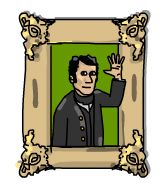
A set of 5 basic worksheets by Teaching Ideas. From simple recognition of a variety of 2D shapes students progress to recognising each shape and its properties, sides, corners, etc
Click HereWorksheet 1 is a picture which shows the main two dimensional shapes with their names.
Worksheet 2 is a picture of lots of shapes. The children should colour in the different shapes using the colours identified in the key.
Worksheet 3 is a matching exercise.
Worksheet 4 requires the children to count the different types of shapes, and fill in their answers in the table on the worksheet.
Worksheet 5 asks the children to complete a table, filling in the properties of different shapes. They are required to work out the number of edges and corners each shape has.
With overview and answers
 Food chains are very simple explanations of how plants and animals areinterdependant. In the real world animals can eat a variety of different foods in order to survive and a food web tries to reflect this. This is an excellent resource by Harcourt for use with a whole class and an interactive whiteboard.
Food chains are very simple explanations of how plants and animals areinterdependant. In the real world animals can eat a variety of different foods in order to survive and a food web tries to reflect this. This is an excellent resource by Harcourt for use with a whole class and an interactive whiteboard.













